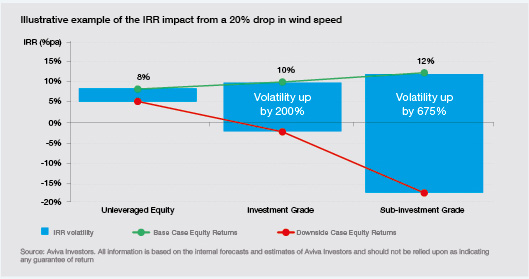A sponsor’s position paper by Boris Mikhailov, investment strategist, Aviva Investors
Pension schemes looking for low risk inflation-linked cashflows offering the potential to generate significantly higher yields than index-linked gilts should take a closer look at unlevered infrastructure strategies.
The UK’s decision to leave the European Union and recent easing measures by the Bank of England has left gilt yields in unchartered territory. Given the uncertain macro-economic environment, with gilt yields expected to remain low for longer, and returns in traditional asset classes exposed to heightened volatility, there is an obvious rationale for pension schemes to consider alternative income assets to help meet their long term liabilities. Infrastructure is one option; either through a stand alone allocation or as part of a wider multi-asset alternative strategy. Infrastructure assets have certain characteristics that should appeal to pension funds, namely they are long-term investments and are designed to withstand periods of volatility and economic uncertainty.
Challenging conventional approaches to investing
The conventional way to invest in infrastructure is through debt or equity; participating in the financial returns of an underlying infrastructure project and getting exposure to the market. An alternative approach is to invest on an ‘unlevered’ basis, where the investor buys the whole infrastructure project capital structure and gains full control of the assets. This can reduce financial volatility and provide low risk inflation-linked cashflows at significantly higher yields than index-linked gilts. In other words, it offers the chance to generate ‘equity-like returns whilst taking debt-like risks’. Until recently, this approach was predominantly the domain of pension schemes with significant governance budgets or in-house expertise, but now there is a range of products available to suit the needs of pension schemes of all shapes and sizes
What infrastructure projects could form part of the strategy?
Infrastructure investments can be sourced from lower-risk sectors, such as utilities, renewable energy and social infrastructure, to higher-risk sectors, such as ports and mobile telecoms. Where the objective is to generate low risk inflation-linked cashflows, the focus needs to be on lower-risk infrastructure projects.
There is a diverse range of opportunities that fulfil these criteria whilst aiming for attractive – high single digit – returns; in particular ‘low carbon’ infrastructure assets such as renewable energy or energy efficiency projects. Revenues from these types of projects tend to be contractual or from regulated
mechanisms rather than based on economic usage, making them especially attractive from return and diversification perspectives. The stable, long-term income streams they can provide make them a good fit for pension schemes with liabilities to match.
Energy centres for hospitals offer one such opportunity. An energy centre is a mini power station, providing both electricity and localised heat distribution to the hospital at a lower cost than taking energy from the grid. Energy efficiency is increasingly important to the UK’s National Health Service (NHS), which has an estimated annual energy bill of around £750 million1. Powering lifesaving equipment and large hospital buildings is a growing strain on public finances, so it is not surprising that energy efficiency facilities have been gaining favour.
In Dundee, a £15.4 million2 project is underway that will include the construction of a new energy centre for Ninewells Hospital and Medical School. The energy centre will supply 100% of the hospitals’ heat requirements and c.90% of power requirements. The project is forecast to reduce energy costs by c.25% and CO2 emissions by c.13%3.
As well as providing savings for the NHS, it should also provide stable and low-risk cashflows to investors that funded the project. All cashflows for this project are contracted with NHS Tayside. Renewable infrastructure assets such as solar panels and wind turbines qualify for regulatory support through Feed-in-Tariffs or Renewable Obligation Certificates. These provide payments for the electricity generated as an incentive to invest in the sector and also offer predictable returns.





